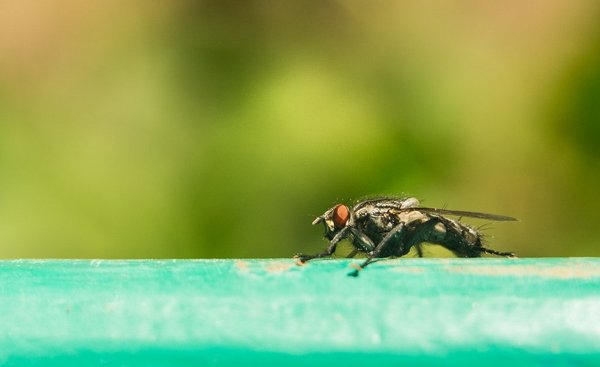 Read this article in French
Read this article in French- Share this article
- Subscribe to our newsletter
Tsetse-fly trap: biotechnology for Africa’s rural population
The tsetse fly is found in wide areas of Africa south of the Sahara. It causes sleeping sickness (trypanosomiasis) in both humans and animals.
The fly feeds on human and animal blood. In doing so, it can transmit trypanosomes – small unicellular organisms which use the fly as an intermediate host and cause dangerous inflammation of the lymphatic and nervous systems in humans and animals. No vaccine is available to date for trypanosomiasis, and if untreated it is mostly fatal. In agriculture, and particularly livestock farming, trypanosomiasis causes major damage through sick and dying animals.
Besides using insecticides against tsetse flies, they are also caught in traps. Attractants include substances found in ox urine, among other sources. These substances (chemical structure: 3-ethyl-phenol and 3-propyl-phenol, or 3-EP and 3-PP for short) are produced from petroleum derivatives or synthesised from extracts from cashew nut shells. However, both processes are elaborate, making them impracticable and too expensive for rural communities in Africa.
Molecular biologists in a research project at Frankfurt’s Goethe University in Germany have now succeeded in producing 3-EP and 3-PP in genetically modified brewer’s yeast (Saccharomyces cerevisiae), The scientists used a strain of yeast into which they had previously introduced a new metabolic pathway, modifying its sugar metabolism. This enabled the yeasts to produce 3-EP and 3-PP from sugar, in concentrations similar to those found in ox urine.
Attractants for fly traps can be produced locally and at low-cost
Julia Hitschler, post-graduate doctoral candidate at the Goethe University’s Institute for Molecular Bio Science explains: “Ideally, our yeasts could grow in Africa on nutrients based on plant waste or food or feed residues. This would make it possible to produce attractants at virtually zero-cost, and locally. Currently, we’re looking for partners to help us test our yeasts on site and supply them to the population.”
Prof. Eckhard Boles, Director of the project, added that the potential of the new yeasts goes beyond the production of tsetse-fly attractants. In future other substances currently made from petroleum or coal could be made by the new yeasts. “Our yeasts could be further developed to produce additional alkylphenols besides 3-EP and 3-PP. Such alkylphenols could be used to produce lubricant additives or surfactant substances in cleaning agents.”
(University of Frankfurt/wi)
Original publication: Julia Hitschler, Martin Grininger, Eckhard Boles: Substrate promiscuity of polyketide synthase enables production of tsetse fly attractants 3-ethylphenol and 3-propylphenol by engineering precursor supply in yeast. Scientific Reports





Add a comment
Be the First to Comment